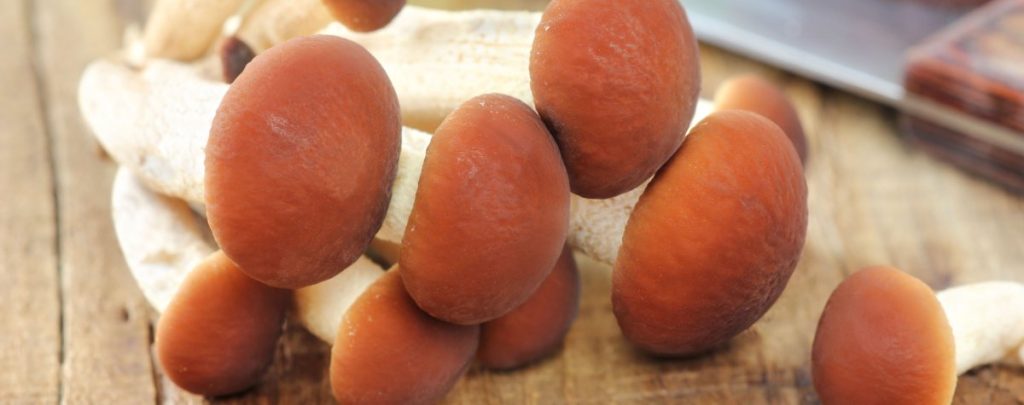If you enjoy the umami taste of gourmet mushrooms, then you must try pioppino mushrooms.
Although you probably won’t find them in your local grocery store, they’re gaining popularity, and you’ll often come across them at farmer’s markets.
Read on to learn more about pioppino mushrooms, what they taste like, where you’ll find them, how to clean, store and cook them and why they’re so popular with chefs.
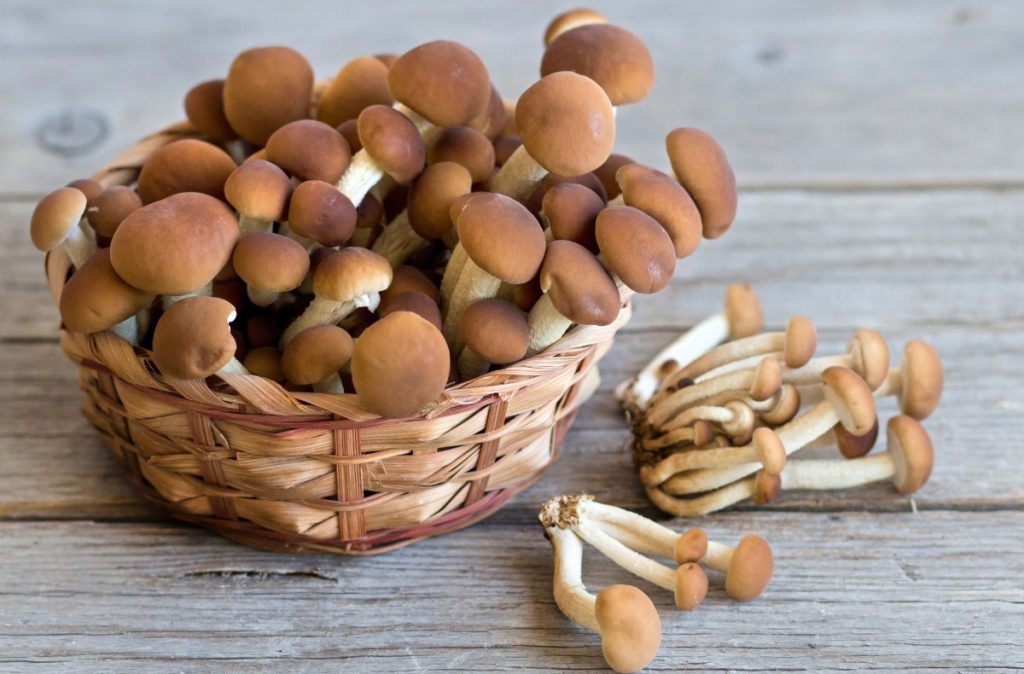
What are Pioppino Mushrooms?
Pioppino mushrooms (Agrocybe aegerita) are delicious edible and medicinal mushrooms that grow in large clusters on decaying hardwood trees, especially poplars.
They have long white or cream stems with small light brown caps, and chefs worldwide favor them for their unique flavor and firm texture.
Although still relatively unknown in some western countries, they’re popular in Europe and Asia, where people have cultivated them for thousands of years for culinary and medicinal purposes.
They have several common names, including:
- Pioppino (Italian)
- Populierenleemhoed (Dutch)
- Pholiote du peuplier (French)
- Black poplar mushroom
- Poplar fieldcap (UK)
- Velvet pioppino
- Swordbelt Agrocybe
- Yanagi-matsutake (Japanese)
- Cha shu gu (Chinese)
What Does Pioppino Taste Like?
Pioppino mushrooms have an earthy, nutty flavor that’s slightly sweet with some peppery notes.
Their smell is subtly floral, and their texture is firm and crunchy, often described as crispy. Some people think their stem texture is similar to asparagus when cooked.
The unique sweet, nutty flavor of these mushrooms compliments many dishes, and different cultures have their own favorite ways of using them.
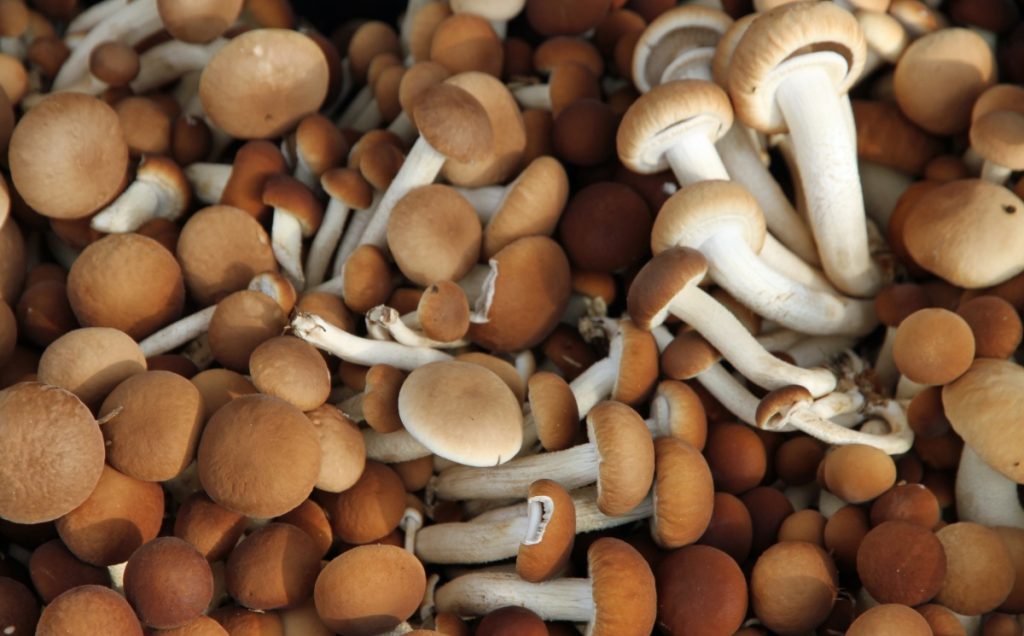
Where Do Pioppino Mushrooms Grow?
Pioppino mushrooms decompose the dead wood of broadleaf hardwood trees, and you’ll find them growing in large clusters on stumps and fallen branches.
Sometimes they appear to grow out of the ground but actually live on dead roots under the soil or covered with leaf mulch.
Their favorite host is the black poplar, which is why they got the name black poplar mushrooms, but they also enjoy other broadleaf trees.
You’ll come across them growing on and around willows, cottonwoods, chestnuts, elms, maples and in China, on tea-oil trees.
Pioppino mushrooms are widespread in the wild and commonly found in southern Europe, Asia, Australia, Mexico and southeastern USA.
When Will You Find Pioppino Mushrooms in The Wild?
You’ll usually find pioppino mushrooms in the wild in late summer and fall as they need high humidity levels and cooler temperatures of 55 to 65°F (13 to 18°C) to fruit.
But, depending on local weather conditions, they may produce flushes at different times of the year.
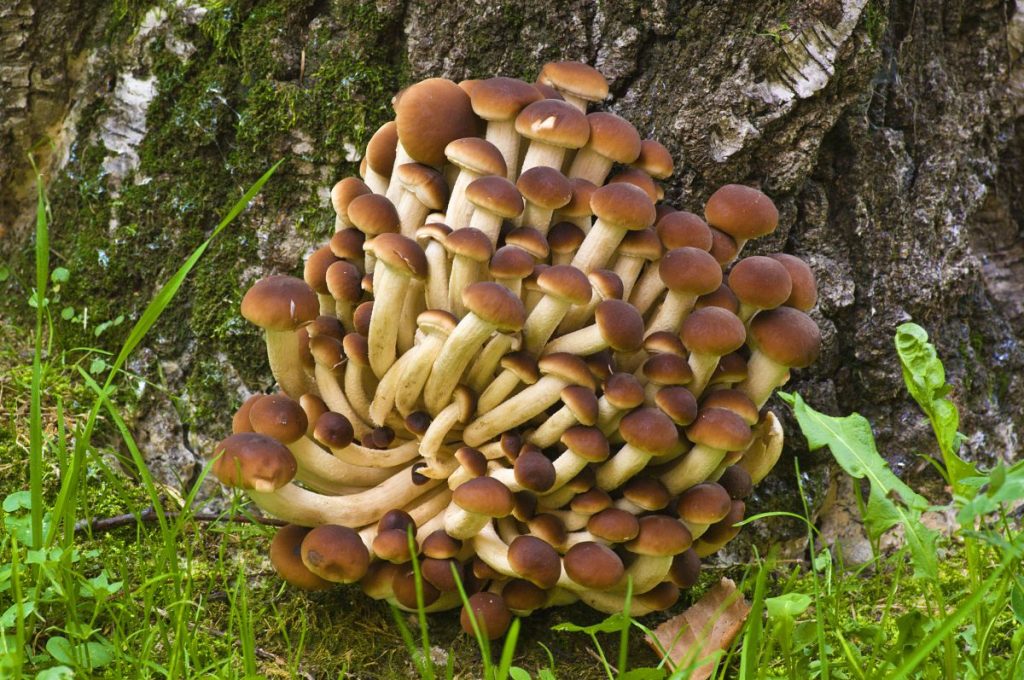
How to Identify Pioppino Mushrooms
Like many other mushrooms, looking carefully at the caps, gills and stems of pioppino mushrooms helps to identify them.
Here are some pioppino characteristics to look for:
Cap
When they’re young, pioppino mushrooms have small chestnut brown caps that lighten as they mature, becoming light brown or pale cream with darker centers.
As pioppino mushrooms grow, their smooth caps flatten and become convex, sometimes wrinkling and cracking.
Their caps’ average size is 1.5 to 4 inches (4 to 10 cm) in diameter, but they can sometimes get as large as 6 inches (15cm).
Gills
Underneath their caps, pioppino mushrooms have closely-packed small gills that start out a pale beige or cream color and turn brown as the mushrooms mature.
The gills change color as they produce thousands of spores, and if you make a pioppino mushroom spore print, it will be brown.
The gills attach to the top of the stem and sometimes run down a little, making them slightly decurrent.
Stem
Pioppino mushrooms have long thin creamy white stems, usually between 0.4 and 0.6 inches (1 and 1.5 cm) thick.
Their stems are often bent and sometimes fused at the base when growing in large clusters.
One characteristic that helps with identification is that pioppino stems often have a ring on the upper part of the stem.
This ring is the remnants of the partial veil that protected the gills when the mushrooms were young.
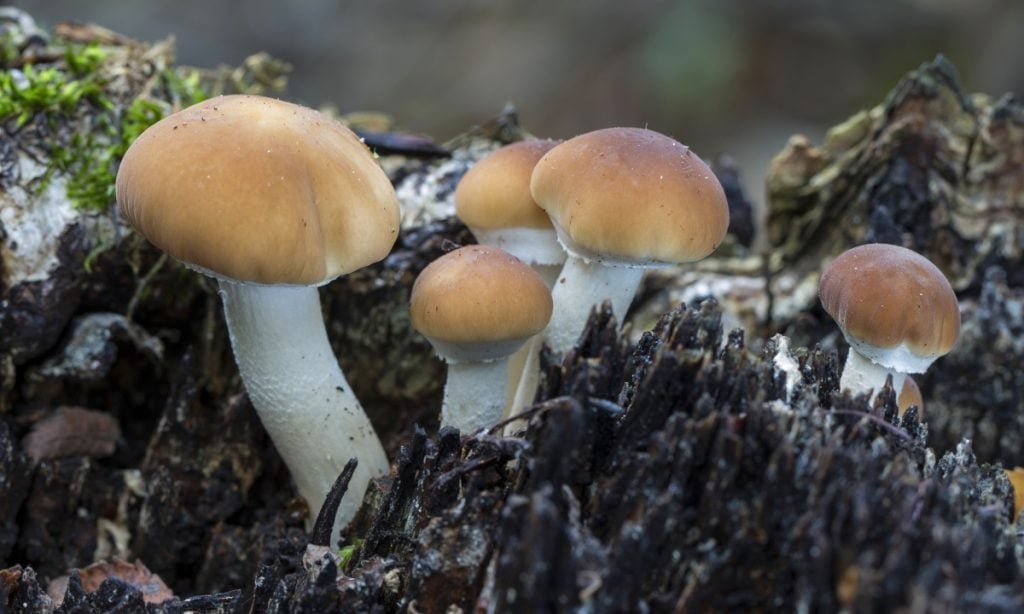
Pioppino Mushroom Look-Alikes
When foraging for mushrooms, take an experienced mycologist with you, and don’t eat any mushrooms until you have identified them and are 100% sure they’re edible.
The Agrocybe genus of mushrooms has over 100 species, and it’s not always easy to differentiate between them.
Mushroom identification apps can help with identification, but if you’re even slightly unsure, ask an expert for help.
Fortunately, the pioppino mushrooms’ fondness for poplars and willow trees makes identifying them a little easier.
Here are some mushrooms that you could confuse with a pioppino:
Spring Fieldcap (Agrocybe praecox)
The spring fieldcap mushroom looks very similar to pioppino mushrooms but is often smaller with a paler cap when mature.
These mushrooms usually appear in spring and early summer, hence their name, but you’ll sometimes find them in autumn.
One notable difference is where you’ll find these mushrooms. Instead of growing on stumps and fallen branches, spring fieldcaps grow on the ground in grass, wood chips or other wood debris.
Fortunately, they’re edible, although they don’t have the same delicious flavor as pioppino mushrooms.
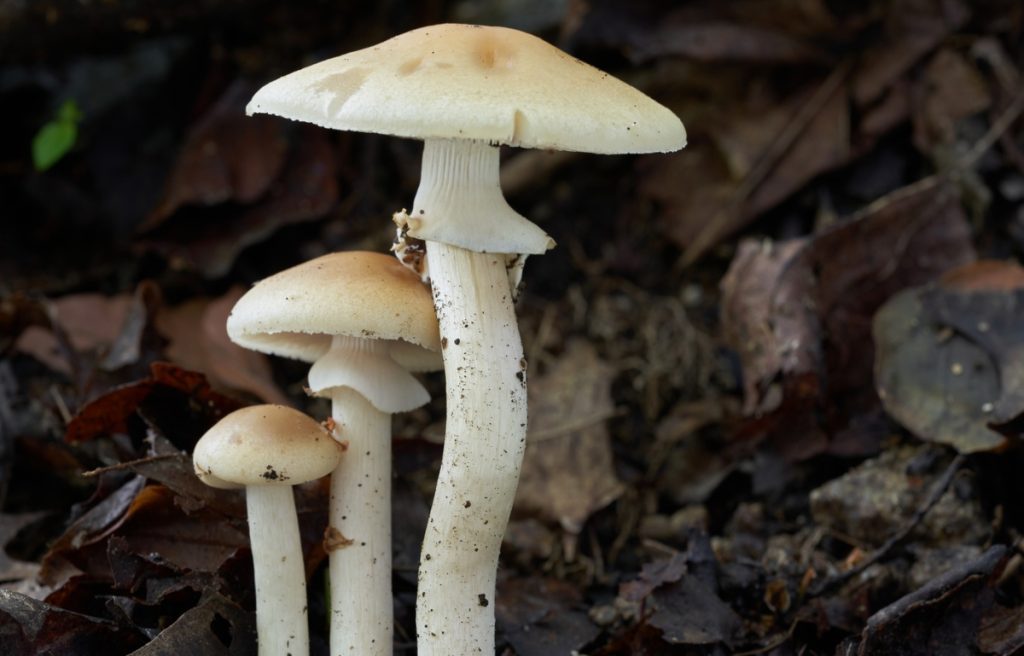
Wrinkled Fieldcap (Agrocybe rivulosa)
You’ll also find the wrinkled fieldcap growing in wood chip mulch, and although it looks very similar to the spring fieldcap and the pioppino, its wrinkled cap helps with identification.
This relatively rare mushroom smells like a pioppino but is usually smaller with a thinner ring on the stem.
People generally consider the edibility of these mushrooms as unknown, but there are reports of people eating them with no obvious side effects.
Oyster Mushrooms (Pleurotus ostreatus)
Sometimes, at first glance, a cluster of mature pioppino mushrooms can look a little like oyster mushrooms.
But a closer look will quickly confirm identification as an oyster mushroom’s spores are a white to pale lilac-gray, and when mature, their gills are white or cream in color.
Pioppino mushrooms have brown spores, and their gills start out pale beige and become brown as they mature.
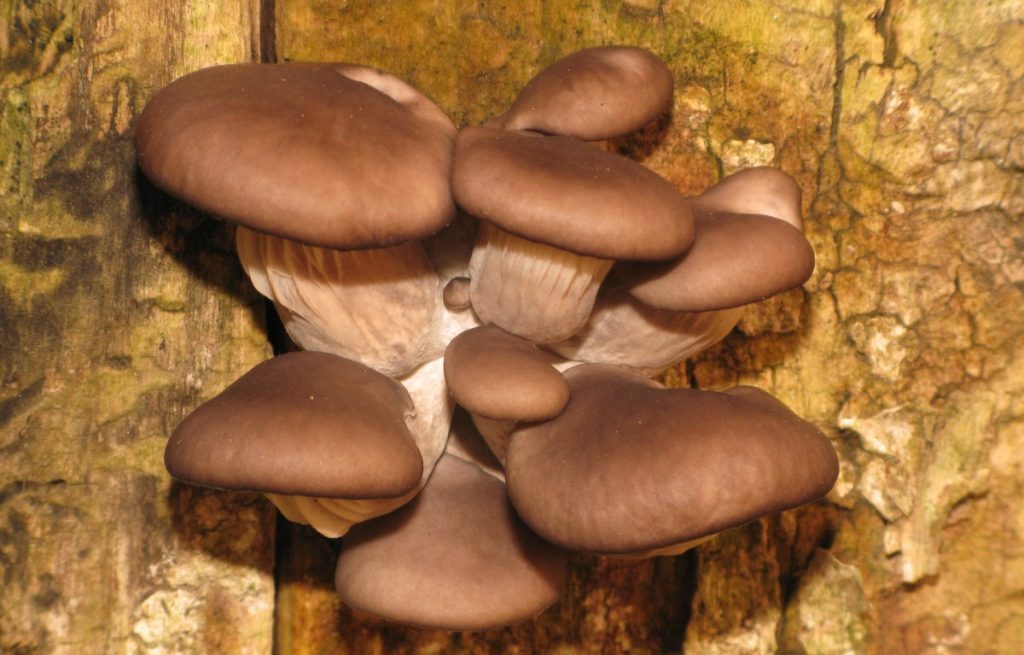
How to Grow Pioppino Mushrooms
One of the best ways to know the mushrooms you’re eating are safe is to grow your own at home.
Pioppino mushrooms are not as easy to grow as oyster mushrooms, as they’re slightly more sensitive to temperatures and humidity levels.
But, once you’ve successfully cultivated oyster mushrooms and have some mushroom growing experience, cultivating pioppino mushrooms shouldn’t be a problem.
And, you can always build a DIY shotgun fruiting chamber or Martha grow tent to help maintain the required growing conditions.
If the climate in your area is suitable, you can grow pioppino mushrooms at home, indoors and outdoors.
Growing Pioppino Mushrooms Indoors
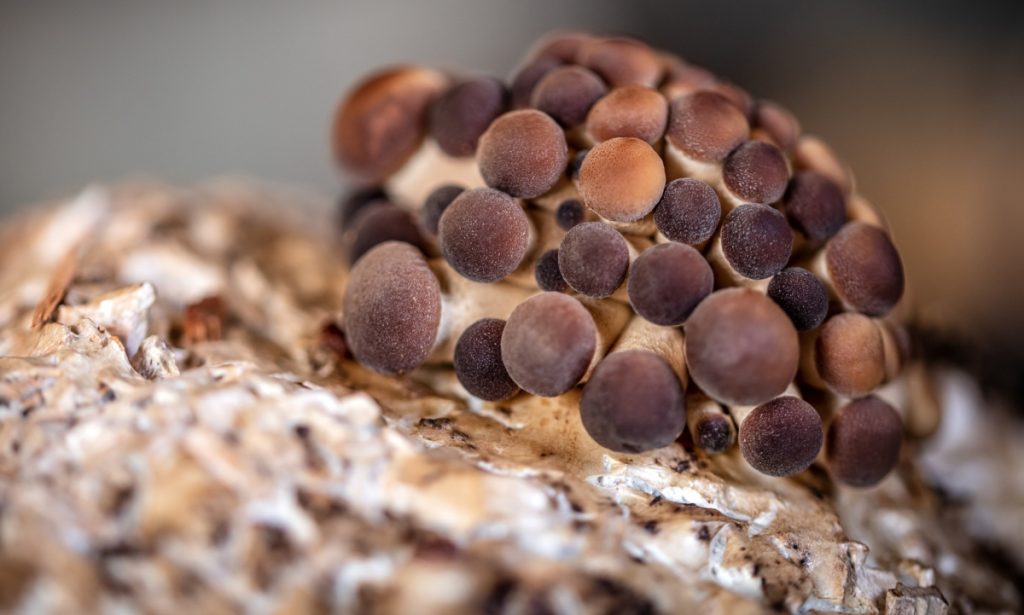
It’s relatively easy to grow pioppino mushrooms indoors, and although they’re one of the easiest mushrooms to grow, they require more attention and monitoring than oyster mushrooms.
Pioppino mushrooms enjoy cooler temperatures of 55 to 65°F (13 to 18°C), and the trickiest part when growing them indoors is providing enough humidity, especially during pinning.
If you live in a dry climate, you may need to use a humidity tent or fruiting chamber to maintain the correct humidity levels while still providing enough fresh air exchange.
You can grow pioppino mushrooms indoors in bags, jars or monotubs, with chopped straw or hardwood sawdust as a substrate.
The best way to cultivate your first pioppino mushrooms is with a mushroom grow kit. These come with detailed instructions and a fully colonized ready-to-fruit substrate block.
Baby pioppino mushroom pins will begin to form 2 to 5 days after you put your kit in fruiting conditions, and from this point, the mushrooms expand rapidly.
Around 6 to 10 days after your mushroom pins form, you could harvest your first flush of pioppino mushrooms.
Growing Pioppino Mushrooms Outdoors
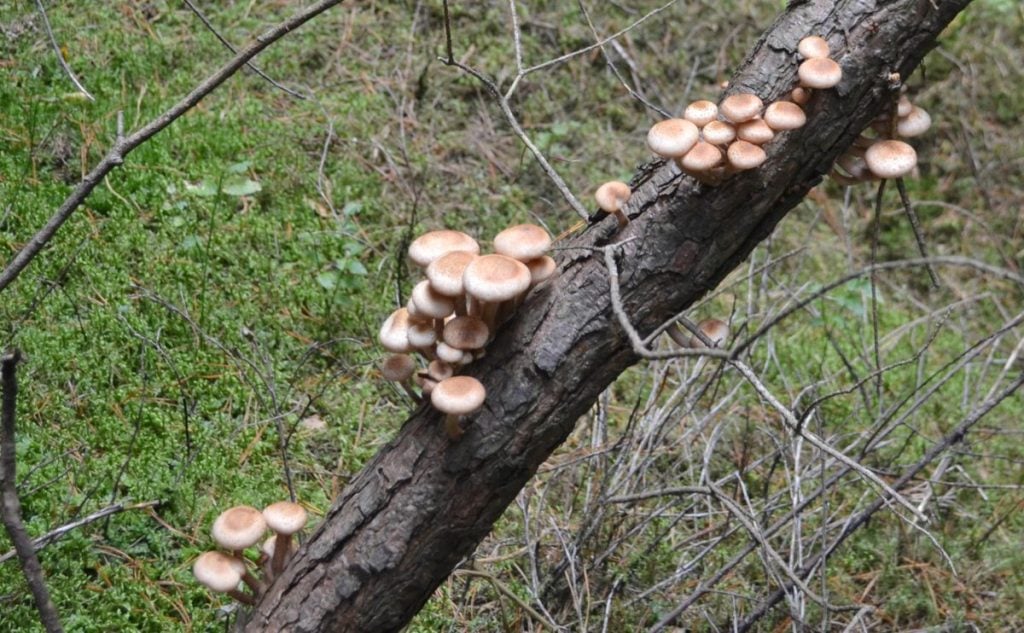
We think this is one of the easiest ways to cultivate pioppino mushrooms as nature provides the growing conditions.
You can grow pioppino mushrooms outdoors in a mushroom bed using wood chips or on hardwood logs half buried horizontally in a sheltered, shady spot in your garden.
When growing mushrooms on logs, it takes longer for the mycelium to colonize the log. But it’s worth the wait as your colonized logs will provide fresh pioppino mushrooms for several years.
When to Harvest Pioppino Mushrooms
It’s best to harvest pioppino mushrooms when they’re still young and firm before their caps flatten out and become concave.
Young pioppino mushrooms have small round button-like caps and a partial veil covering the gills.
When the bottom of the caps start to pull away from the stem, breaking the partial veil and revealing the gills, they’re ready for harvest.
At this stage the caps should be around 0.5 to 1.5 inches (1 to 4 cm) in diameter.
To harvest pioppino mushrooms, gently hold the base of the cluster and twist and pull to remove them from the substrate.
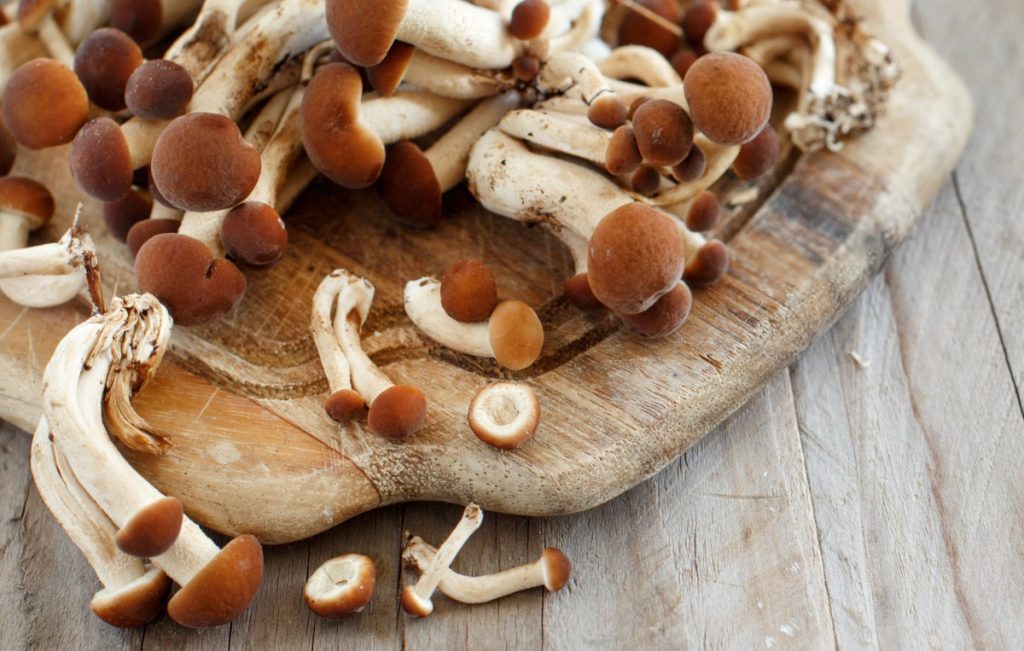
How to Clean Pioppino Mushrooms
If you buy cultivated pioppino mushrooms, they’re often washed before packaging, and you won’t need to clean them further.
But, mushrooms foraged in the wild or purchased fresh from a farmer’s market often need a rinse to remove any bugs, dust or other debris.
To clean pioppino mushrooms, trim the bottom of the stem, then give them a quick rinse under running water to remove any dirt or wood residue.
When clean, gently pat them dry with paper towels or lay them out to dry on a kitchen towel.
Our article, “How to Clean Mushrooms: A Step by Step Guide,” has more information and practical tips.
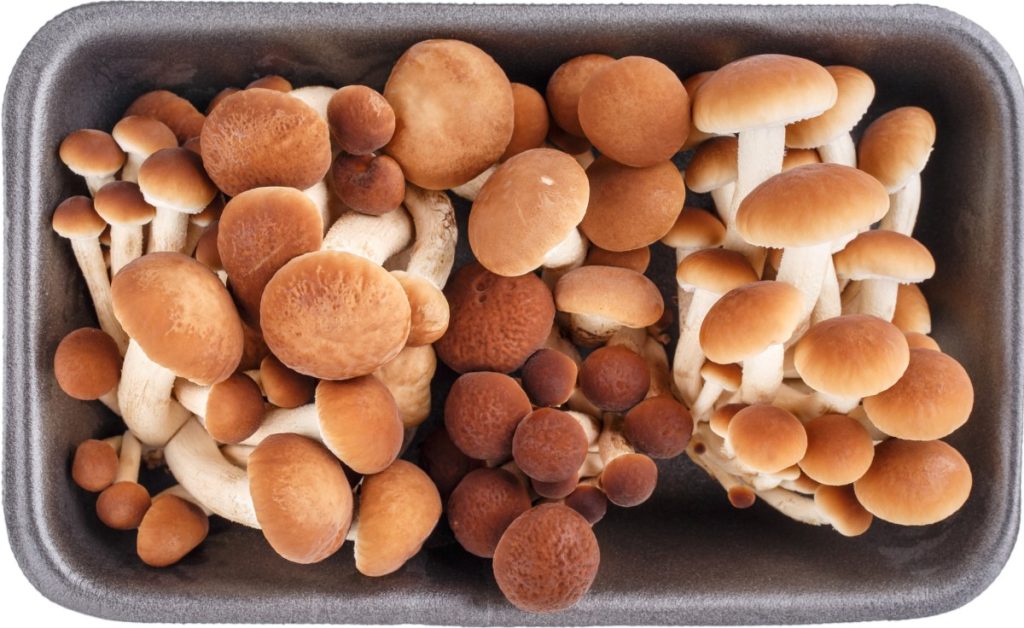
How to Store Pioppino Mushrooms
When stored correctly, fresh pioppino mushrooms will last in the fridge at 39°F (4°C) for 5 to 6 days and sometimes even longer.
Like other mushrooms, it’s best to store your pioppino mushrooms in a breathable paper bag on a shelf in the fridge, not in the vegetable drawer, as this will help them last longer.
A paper bag provides a cool environment with good airflow that prevents them from sweating and going bad.
At the same time, the bag creates a partially closed environment helping to prevent too much moisture loss.
If they start to dry out and shrivel a little, you can still use them in soups and sauces, as they’ll rehydrate while cooking.
If you need to store your pioppino mushrooms for longer than 5 to 6 days, try longer-term preservation methods like drying, freezing, canning or pickling.
For more long-term storage information, ideas and guides, take a look at our article, “How to Preserve Mushrooms: A Step-by-Step Guide.”
How Do You Eat Pioppino Mushrooms?
It’s best to eat pioppino mushrooms cooked as this enhances their flavor. And, because they retain their texture and nutritional value during cooking, there’s no downside.
Cooking is beneficial for most mushroom species as it not only softens their cell walls releasing more active compounds but also destroys the heat-sensitive toxins in some mushrooms.
And if you’re wondering, “what are pioppino mushrooms good for?” The answer is most dishes. They’re very versatile and work exceptionally well in any recipe that requires wild mushrooms.
Both fresh and dried pioppino mushrooms are delicious in soups, stir-fries, risottos and pasta dishes, and their intense flavor goes well with game and red meat.
Can you eat Pioppino Mushroom stems?
Yes, you can eat pioppino mushroom stems, and as they’re more fibrous than the caps, they keep their nice crunchy texture even after cooking for a long time.
The fact that pioppino mushroom stems retain their texture so well is one of the reasons they’re excellent for use in soups, sauces and stews.
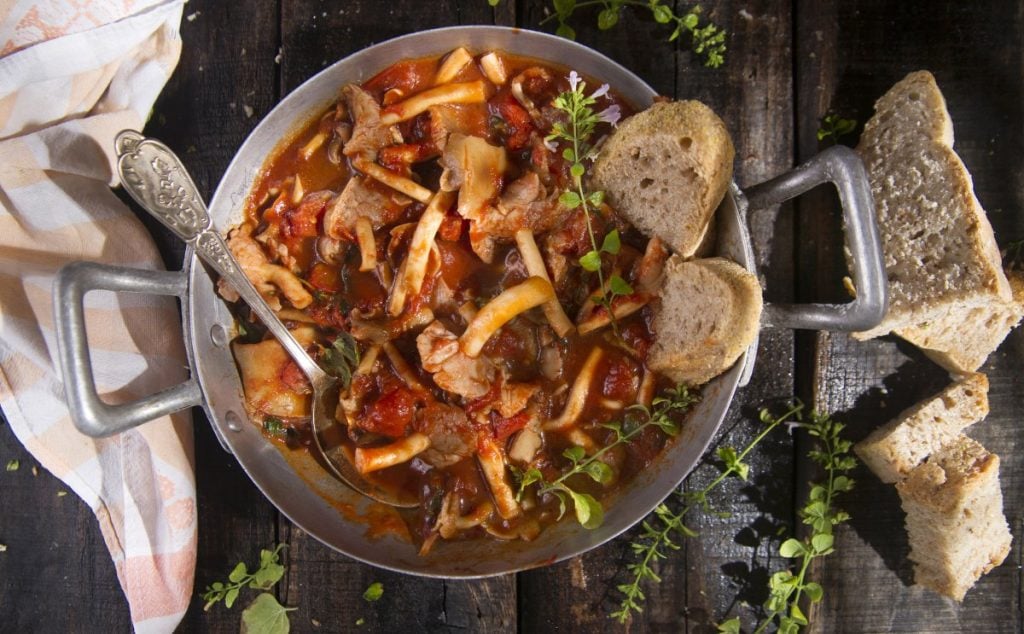
How to Cook Pioppino Mushrooms
You can saute, stir-fry and roast pioppino mushrooms or add them to risottos, omelets, soups and stews.
Our favorite way to enjoy their unique flavor is to saute them in olive oil or butter for a few minutes.
A pioppino mushroom’s firm texture makes it perfect for sauteing. Remember not to crowd the pan and avoid stirring them while they’re sauteing.
Another great thing about sautéed mushrooms is that you can easily add other ingredients like garlic, parsley, chili, shallots, wine or cream to create tasty sauces and toppings.
Our article on sauteing mushrooms has more tips on how to saute pioppino mushrooms and get perfect crispy sautéed pioppinos every time.
The recipe below is a great example of how versatile sautéed pioppino mushrooms are.
Gnocchi with Pioppino Mushrooms and Baby Spinach
This quick and easy recipe adapted from Giovanni Rana ticks all the boxes as it’s nutritious, filling and delicious.
You can adapt this recipe for vegans by replacing the butter and parmesan cheese with vegan alternatives.
Ingredients
- 12 ounces skillet gnocchi
- 1 tbsp butter
- 10 ounces of pioppino mushrooms, cleaned and sliced
- 8 ounces of fresh baby spinach leaves
- 1 onion, finely chopped
- Extra virgin olive oil
- Parmesan cheese shavings
- Salt and pepper to taste
Instructions
- Heat the olive oil in a large skillet and sauté the chopped onion for a few minutes.
- Add the pioppino mushrooms, season with salt and pepper, and sauté for 10 minutes on low heat.
- While the mushrooms are cooking, melt the butter in another large skillet over medium-low heat. Then add the gnocchi and sauté for 5 minutes.
- Add the cooked gnocchi to the skillet with the sauteed mushrooms, and stir well to combine.
- Serve your pioppino gnocchi immediately with baby spinach and parmesan shavings.
Our article, “30 Of The Best Mushroom Recipe Ideas.” Has some of our favorite mushroom recipes for you to try.

Health and Nutritional Benefits of Pioppino Mushrooms
Like most mushroom species, pioppino mushrooms are rich in nutrients and medicinal compounds.
They’re a good source of protein, low in fat and calories, contain all the essential amino acids humans need and lots of beneficial vitamins and minerals like selenium and potassium.
This study on the nutritional value, chemical composition and antioxidant activity of pioppino mushrooms has a detailed breakdown.
Pioppino mushrooms contain several polysaccharides with antioxidant, antiaging, and organ protecting effects.
And other compounds with anti-inflammatory and anti-tumor properties, as well as Agrocybin, a peptide that provides antifungal benefits.

Final Thoughts
Pioppino mushrooms have a lot to offer as they’re nutrient-rich with loads of earthy, nutty flavor, a firm, crunchy texture and several health benefits.
If you can’t find fresh pioppino mushrooms in your area, you can always grow your own at home, and they’re one of the easier mushroom species to cultivate.
To learn more about other edible mushrooms and their health benefits, visit our Mushroom Education Hub.
And, if you’re an aspiring mushroom cultivator, visit our Mushroom Growing Hub or sign up for one of our online mushroom cultivation courses.
